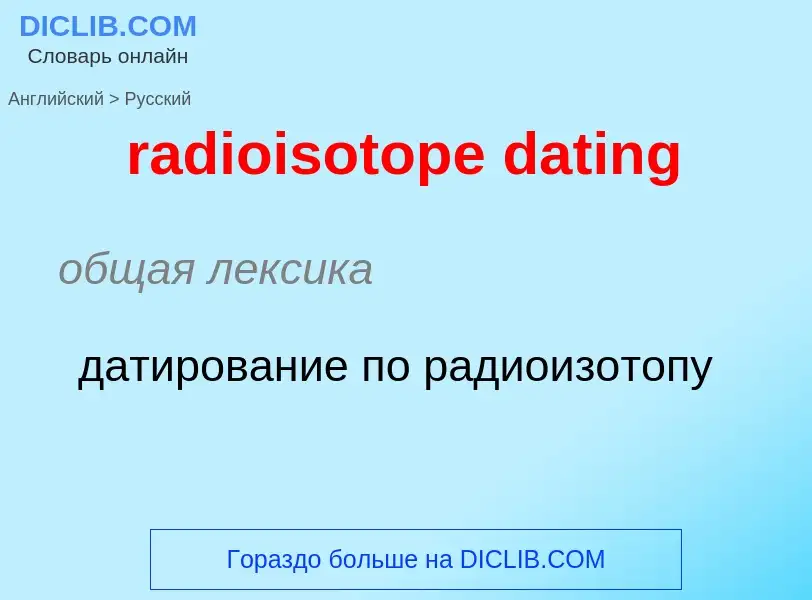Translation and analysis of words by artificial intelligence
On this page you can get a detailed analysis of a word or phrase, produced by the best artificial intelligence technology to date:
- how the word is used
- frequency of use
- it is used more often in oral or written speech
- word translation options
- usage examples (several phrases with translation)
- etymology
radioisotope dating - translation to russian
общая лексика
датирование по радиоизотопу
общая лексика
абсолютный [точный геологический] возраст
Definition
Wikipedia
Radiometric dating, radioactive dating or radioisotope dating is a technique which is used to date materials such as rocks or carbon, in which trace radioactive impurities were selectively incorporated when they were formed. The method compares the abundance of a naturally occurring radioactive isotope within the material to the abundance of its decay products, which form at a known constant rate of decay. The use of radiometric dating was first published in 1907 by Bertram Boltwood and is now the principal source of information about the absolute age of rocks and other geological features, including the age of fossilized life forms or the age of Earth itself, and can also be used to date a wide range of natural and man-made materials.
Together with stratigraphic principles, radiometric dating methods are used in geochronology to establish the geologic time scale. Among the best-known techniques are radiocarbon dating, potassium–argon dating and uranium–lead dating. By allowing the establishment of geological timescales, it provides a significant source of information about the ages of fossils and the deduced rates of evolutionary change. Radiometric dating is also used to date archaeological materials, including ancient artifacts.
Different methods of radiometric dating vary in the timescale over which they are accurate and the materials to which they can be applied.


![[[Apatite]] crystals are widely used in fission track dating. [[Apatite]] crystals are widely used in fission track dating.](https://commons.wikimedia.org/wiki/Special:FilePath/Apatite Canada.jpg?width=200)
![Lu-Hf]] isochrons plotted of meteorite samples. The age is calculated from the slope of the isochron (line) and the original composition from the intercept of the isochron with the y-axis. Lu-Hf]] isochrons plotted of meteorite samples. The age is calculated from the slope of the isochron (line) and the original composition from the intercept of the isochron with the y-axis.](https://commons.wikimedia.org/wiki/Special:FilePath/Figure 2 High res Debaille et al (2017) The role of phosphates for the Lu–Hf chronology of meteorites.gif?width=200)

![[[Thermal ionization mass spectrometer]] used in radiometric dating. [[Thermal ionization mass spectrometer]] used in radiometric dating.](https://commons.wikimedia.org/wiki/Special:FilePath/Thermal ionization mass spectrometer.jpg?width=200)






